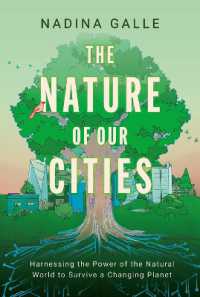- ホーム
- > 洋書
- > 英文書
- > Business / Economics
Full Description
Meet Learning Needs With New Tools and New Thinking
Learning is no longer an activity or luxury that only occurs at specific stages in your life or career. With the digital revolution, learning has become immediate, real-time, and relevant whether you're young, old, in the workforce, in school, or at home. As a learning and development professional, you've likely confronted the digital learning revolution armed with instructional design models from the pre-digital world. But today's digital universe has a new model to address its wealth of new technologies and a new philosophy of learning experience design: learning cluster design.
Designing for Modern Learning: Beyond ADDIE and SAM offers you and your learners a new way to learn. It describes the fundamental shift that has occurred in the nature of L&D's role as a result of the digital revolution and introduces a new five-step model: the Owens-Kadakia Learning Cluster Design Model (OK-LCD Model), a new five-step model for training design that meets the needs of modern learning. The model's five steps or actions are an easy-to-follow mnemonic, CLUSTER:
Change on-the-job behavior
Learn learner-to-learner differences
Upgrade existing assets
Surround learning with meaningful assets
Track transformation of Everyone's Results.
In each chapter, the authors share stories of business leaders, L&D professionals, and learners who have successfully adopted the OK-LCD Model, detailing how they altered organizational mindsets to meet the needs of modern learners and their organizations. Included are how-to features, tools, tips, and real-life "in practice" sections.
This is an exciting time to be in L&D. It's time to join the revolution.
Contents
Foreword by Pat McLagan
Preface
1. Mapping the Past and Present for the Future
2. Adopting a New Model for Our Changing World
3. Owning the Workplace, not Just the Classroom
4. Creating Experiences as Unique as Our Learners
5. Getting a Quick Start: Remix What You've Got
6. Surrounding Learners in their Moments of Learning Need
7. Measuring Transformation, Not Just Participation
8. Putting it All Together. An OK-LCD Example
9. Envisioning Your Future with the OK-LCD Model
Appendix
References
Further Reading







